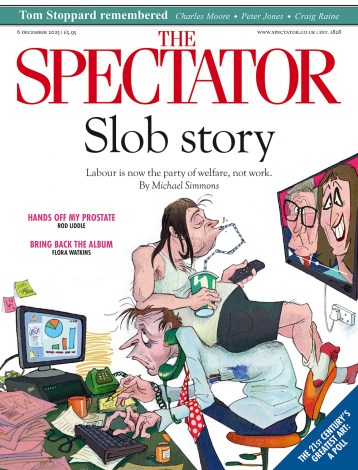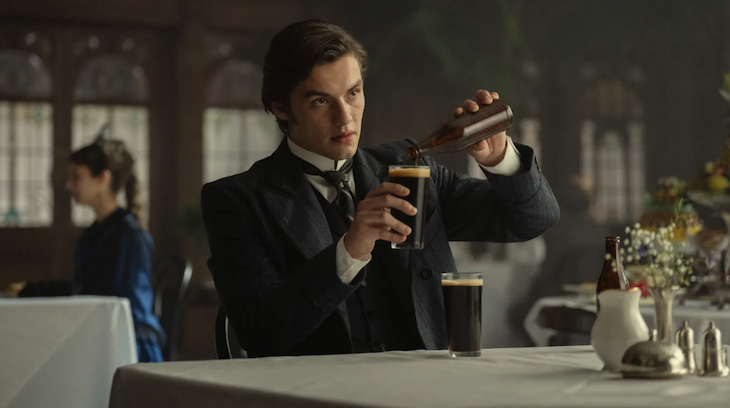Beer, Brits, and bad language are the few culturally accurate elements of the new Netflix series, House of Guinness. Loved by American and UK critics, hated by Irish critics, the series on the battle for control of the iconic Irish Guinness family brewery in 19th-Century revolutionary Ireland has sharply divided opinion.
Are we Irish an over-sensitive lot?
A ‘steampunk Mr. Tayto’ or a ‘rollicking retelling’ of an Irish version of Succession sums up the extent of the divide. The eight-part drama debuted with an 89 per cent audience approval rating on Rotten Tomatoes and a five-star review from the Guardian. But to Irish critics, House of Guinness is historically inaccurate, stereotypical tosh.
As the Guardian’s Ireland correspondent, Rory Carroll, wrote: ‘They hate the depiction of Ireland’s history, hate the dialogue, hate the costumes, hate the lighting. Netflix announced that it was the first show to have Irish subtitles and still the critics hate it.’
The Irish Times review mocked James Norton’s accent in his role as head honcho of the Dublin brewery, calling him a ‘steampunk Mr Tayto’ – a reference to the Irish crisps’ mascot. Irish Fenians are depicted as ‘feral leprechauns’. The Irish Independent was equally scathing: ‘The cliches arrive thick and fast. The producers do point out that their series is fiction, but then the majority of our popular history is fiction, and quite dangerous fiction at that. We don’t need any more of it.’
The series was criticised for its ‘rudimentary understanding of Ireland’s experiences of colonialism’ and concerns that the creator, Steven Knight of Peaky Binders fame, is getting his mitts on 19th-century Irish history.
Which begs the question, are we Irish an over-sensitive lot? Have we played up our ‘Paddywackery’ to such an extent it is now a commonplace perception of the country? Or is the backlash against the depiction of Ireland in House of Guinness justified? In a word, yes.
Having struggled through a few episodes of anachronistic dialogue, bad Brits, oppressed Fenians with silly beards, topped off with ‘Oirish’ accents, House of Guinness is a challenging watch.
The drama follows the four children of Sir Benjamin Lee Guinness as they jockey for control of the Guinness dynasty after his death in 1868, in an Ireland riven with political and social unrest. It is a dark production, with the back streets of Ireland’s capital more Dickens than Dublin – although there is no shortage of marauding Fenians in black felt caps, green costumes, and beer to keep American audiences happy.
‘Oirish’ accents are a constant bugbear. Tom Cruise’s butchered Irish accent in Far and Away was a particular low point, and House of Guinness is not much better. Irish actors Jack Gleeson, who plays the fictional Byron Hedges, and Hilda Fay, who makes an appearance in episode three, have some of the only authentic Irish accents in the series. The pairing of the Kneecap soundtrack ‘Get Your Brits Out’ with scenes of 19th century destruction was so jarring it almost had me reaching for the ‘off’ button.
How did the producers get the Brits so right and the Irish so wrong?
The depiction of a rioting Dublin mob at Benjamin’s funeral is factually wrong. Rather, contemporary accounts describe a respectful solemn affair. The activities of the Fenians, who play a large part of the narrative, is wildly inaccurate. The Fenians had gone underground in 1867 and were not a visibly active force at that stage.
One Fenian with red curly hair – what else? – says ‘we only want a United Independent Ireland,’ a hilarious blooper that could have been avoided had the script writers possessed more than a nodding acquaintance with Irish history. In 1868, Ireland was a united country – albeit under British rule – the question of ‘unity’ only arose 50 years later, after Irish partition.
The high points are the sumptuous cinematography, lavish scenes of stately homes and the lush period costumes of the Anglo-Irish aristocracy. The series captures the social mores of the upper class and British accents well. So how did the producers get the Brits so right and the Irish so wrong? Perhaps the producers fell into stereotypical Irish tropes and relied a bit too heavily on the caveat ‘this fiction is inspired by true stories’.
Historical inaccuracies aside, viewing House of Guinness purely through the lens of entertainment it’s still hard to ignore the stereotyping and portrayal of nationalists as pipe smoking, green clad caricatures straight out of Punch magazine. Depictions of destitute rural peasants – just twenty years after the Irish famine – as filthy, violent, savages are unnecessary and downright offensive.
Bafta nominee, James Norton, who plays Guinness factory foreman, Sean Rafferty, with a delicious dollop of menace undoubtedly helped make the series an instant streaming success when it was released in late September. But even he could not otherwise salvage what one Irish critic described as an ‘inauthentic shocker’ that offered yet another version of history.






Comments